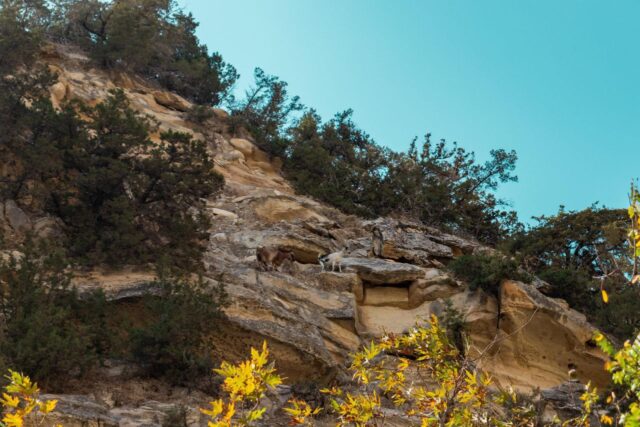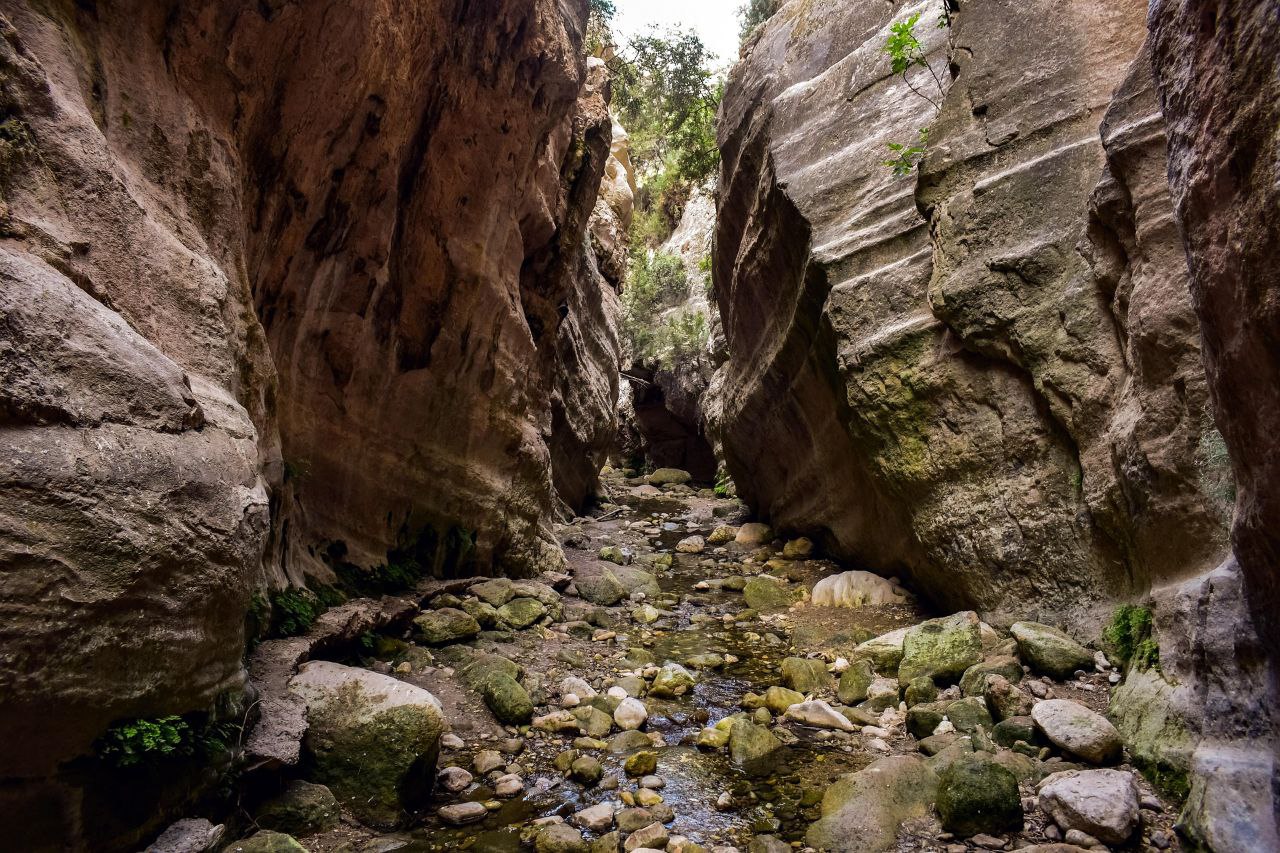Avakas Gorge is one of Cyprus’s most impressive natural wonders, located on the island’s west coast, 18 kilometers from Paphos, within the Akamas National Park. This place impresses with its combination of natural power, geological formations, and silence, broken only by the sound of the wind and the babbling stream. This deep, narrow gorge, carved by water into the limestone cliffs, is considered one of the most beautiful hiking trails on the island.
Contents
Geographical location and origin
The gorge is located in the northwestern part of the Akamas Peninsula, near Lara Bay. It was formed millions of years ago by the erosion of rocks when the Avakas Stream cut through the limestone strata of the Laona Hills. The gorge is up to 30 meters deep, and in some places its width narrows to just one meter, creating veritable stone corridors.
The hiking trail through the gorge is about 2.5 kilometers long and runs along the bed of a dry stream. In the spring, the water here bubbles, but in the summer, only small wet areas and green oases remain, home to unique vegetation.
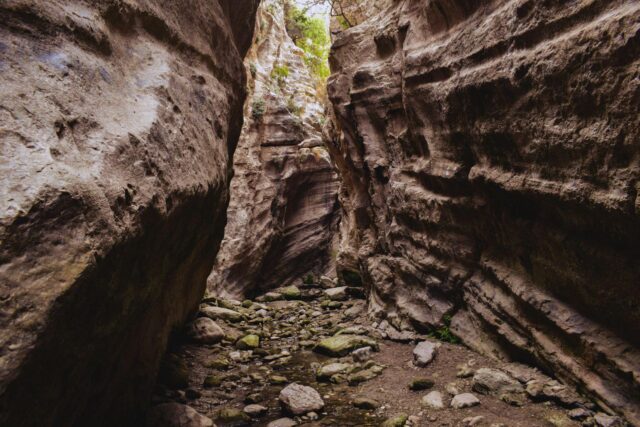
Landscape and natural features
Avakas’s main feature is its geological diversity. The layered walls of the gorge are composed of limestone, sandstone, and conglomerates that formed on the bottom of an ancient sea. During erosion, water carved deep cracks and arches, creating fantastical shapes reminiscent of fossilized waves.
Along the route, you’ll encounter natural niches, stone “gates,” and enormous boulders lodged between walls several meters high. In some places, light barely penetrates, and the humid air creates the feeling of being in another world.
The landscape is constantly changing: at first, the road follows an open riverbed, then gradually descends into the cliffs, where moss, ivy, and ferns appear. In spring, the gorge is especially picturesque—the slopes are covered with blooming cyclamens, orchids, and yellow wildflowers.
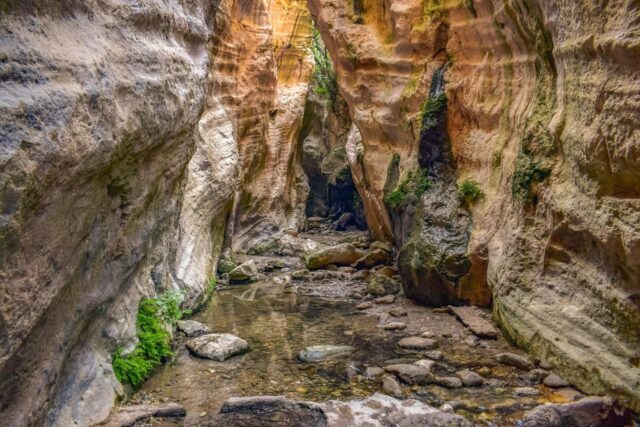
Flora and fauna
Despite its rugged terrain, the Avakas Gorge boasts a rich flora and fauna. Around 200 plant species are found here, including rare endemic species such as the Cyprus wild violet and Troodos lavender.
Animals include lizards, wild goats (mouflon), foxes, and various birds. Hawks and owls often nest on the rocky outcrops. In spring and autumn, the gorge becomes a temporary refuge for migratory birds flying across the Mediterranean.

Route and difficulties
The route begins at the parking lot at the entrance to the gorge, next to the Viklari (The Last Castle) restaurant, renowned for its panoramic views and grilled dishes. For the first few hundred meters, the trail runs through a relatively wide valley with sparse vegetation. Then the path gradually narrows, and hikers find themselves between sheer walls over 20 meters high.
A walk through the gorge takes between 1 and 2 hours, depending on your fitness level. In some places, you’ll need to step over rocks and tree roots, and after rain, you’ll need to navigate streams. Therefore, it’s recommended to wear shoes with good traction and avoid visiting during heavy rainfall, when rockfalls and slippery surfaces can make the walk dangerous.
The end point of the route is where the gorge widens and turns into a picturesque valley, from where you can return along the same path or continue your walk through the surrounding hills.
When is the best time to visit the gorge?
The best time to visit is from March to May and from September to November, when temperatures are comfortable and nature is at its most vibrant. In spring, a stream flows along the bottom of the gorge, creating the atmosphere of a living forest, and in summer, the gorge remains cool even on hot days.
In winter, during the rainy season, flooding and landslides are possible, so the route is temporarily closed. In summer, on the contrary, the cliffs warm up, but due to their height and shade, the temperature inside the gorge is 5-7 degrees lower than on the surface.
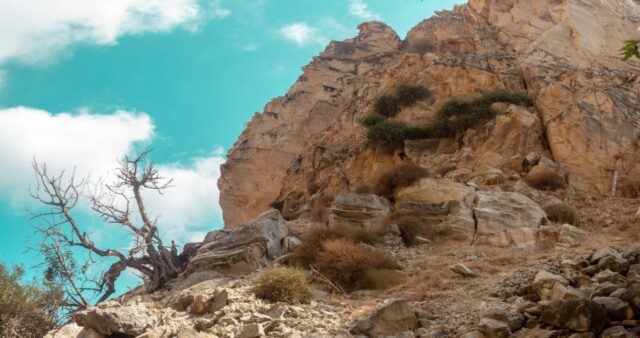
Interesting facts and legends
- According to one local legend, the gorge is named after the ancient shepherd Avakas, who was grazing his goats in these parts and died after falling from a cliff.
- The gorge is often called the “Antelope Canyon of Cyprus”, comparing it to famous gorges in the USA.
- Thanks to the unusual acoustics, even a quiet conversation echoes multiple times in the narrow part of the canyon.
- Locals believe that walking through the gorge brings good luck and “clears the mind,” so not only tourists but also residents of nearby villages often come here.
How to get there
From Paphos, you can reach Avakas Gorge by car, heading toward Lara Bay beach through the villages of Peyia and Agia Mati. The last 3-4 kilometers are on a dirt road that requires careful driving. Parking is located at the entrance to the gorge, next to the Avakas Gorge sign.
There’s no public transportation here, so it’s best to rent a car or book a jeep tour. Many tour companies in Paphos include a visit to the gorge in their Akamas Peninsula itineraries.
What to take with you
- Comfortable sports shoes with non-slip soles.
- A supply of water and light snacks (there are no cafes inside the gorge).
- Sunscreen and a hat – the walk there and back is partly in the sun.
- Camera: The gorge is distinguished by an amazing play of light and shadow, especially in the morning.
Tips for tourists
- Before starting the route, it is recommended to check the weather forecast – during heavy rains, the entrance to the gorge may be closed.
- For safety, do not attempt to climb rocks or deviate from the main trail.
- In spring and autumn, encounters with wild animals are possible – it is better to remain calm and not make noise.
- The morning hours are the most favorable for visiting: fewer tourists and soft light for photographs.
What to see nearby
Near the gorge are:
- Lara Bay Beach, known for its nesting sites for sea turtles;
- Viklari viewpoint, offering views of the Akamas coastline;
- Akamas National Park, where the Aphrodite and Adonis trails are located;
- The village of Peyia, famous for its tavernas and wineries.
This route allows you to combine a walk through the gorge with relaxation in nature and an introduction to the culture of the Paphos region.
Avakas Gorge is one of those places where nature reveals itself in all its pristine power. Here you can see how water and time have shaped a stone masterpiece, where every curve resembles a sculpture carved over centuries.
This place combines adventure, peace, and beauty. Avakas Gorge is ideal for hiking, photography, and relaxation far from civilization. It exudes the essence of nature—vital, eternal, and harmonious.
